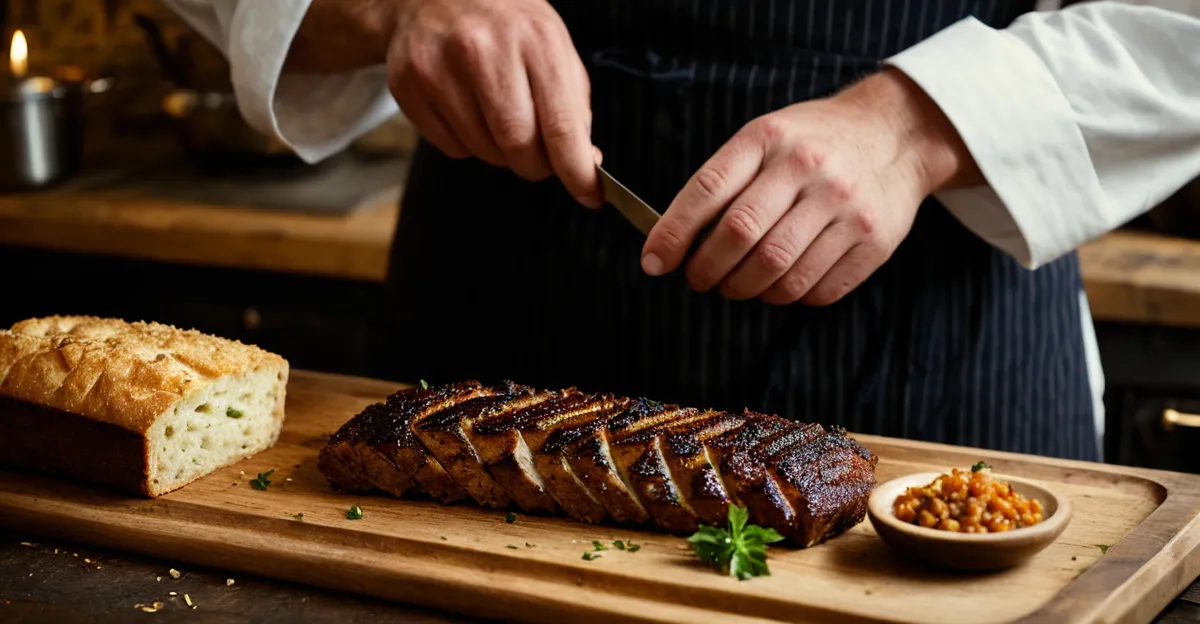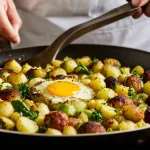Overview of Distinctive UK Cooking Traditions
British culinary history is rich with UK cooking traditions that reflect the nation’s diverse regional cultures and long historical legacy. Exploring the unique British foods reveals a tapestry of recipes and practices passed down through generations, each with specific cultural and historical significance.
At the heart of British culinary history are traditions like the Sunday roast, a communal meal deeply embedded in social and religious practices, and afternoon tea, which evolved into a cherished Victorian ritual featuring scones, sandwiches, and cakes. These traditions showcase how food in the UK serves not only as nourishment but also as a means of fostering community and celebrating shared customs.
In parallel : What are some traditional British breakfast recipes?
Additionally, unique British foods such as the Cornish pasty highlight the influence of regional industries, including Cornwall’s mining heritage. The pasty’s practical design catered to the needs of miners for portable, hearty meals, which contributed to its lasting popularity. In the north, distinctive pies evolved alongside industrial growth, emphasizing how local economies shaped culinary practices.
Festive dishes like Christmas pudding and hot cross buns underscore the UK’s seasonal food customs, carrying symbolism and traditional recipes from medieval times through Victorian celebrations to modern-day holidays. Meanwhile, everyday staples like fish and chips symbolize working-class origins and post-industrial Britain’s adaptation of available ingredients.
Additional reading : What are the key steps to making a classic bubble and squeak?
These examples illustrate the breadth of British culinary history, demonstrating how UK cooking traditions are not only diverse but also deeply rooted in social, economic, and historical contexts. The exploration of these unique British foods offers insight into how the UK’s food customs continue to shape cultural identity today.
The Historical Roots of British Cuisine
The history of UK cuisine reveals a blend of ancient influences from Roman, Anglo-Saxon, and Norman periods. Each of these cultures contributed distinct ingredients and cooking techniques that gradually shaped the historical UK food culture. For instance, Romans introduced new vegetables and farming methods, while the Anglo-Saxons brought staples such as grains and preserved meats.
Regionality and the UK’s variable climate profoundly shaped British food traditions. Coastal areas emphasized seafood, while inland regions developed hearty, grain-based meals suited to colder weather. This diversity laid the groundwork for many unique British foods that remain iconic today.
Early examples of British cooking practices include the preparation of pottages and stews using locally sourced ingredients. These dishes reflect the resourcefulness necessary for survival throughout the centuries and document a commitment to seasonal, regional produce that has persisted in UK cooking traditions. This rich historical backdrop informs the continuing evolution of British culinary heritage.
Signature Traditions: Sunday Roast
The Sunday roast stands as a cornerstone of UK cooking traditions, deeply rooted in both social and religious history. Originating from Christian Sabbath practices, it became customary for families to gather after church services to share a hearty meal. This tradition reflects more than mere sustenance—it embodies communal connection and rest.
Historically, the Sunday roast history reveals a focus on practicality and celebration. Early roasts typically included beef, lamb, or pork, paired with seasonal vegetables such as potatoes, carrots, and parsnips. Over time, the accompaniments evolved to include Yorkshire puddings and rich gravies, enhancing the meal’s complexity without overshadowing its communal nature.
The importance of the Sunday family meal extends beyond food. It fosters family bonding and continuity of British culinary heritage, making it one of the most recognizable examples of traditional UK cooking traditions. Today, while modern adaptations exist, the essence of the Sunday roast as a time for gathering and sharing remains steadfast in British culture.
The Art and Ritual of Afternoon Tea
Afternoon tea in the UK emerged in the 19th century as a distinct Victorian food ritual, designed to bridge the long gap between lunch and dinner. Its origins trace to Anna, the Duchess of Bedford, who sought a light meal to stave off hunger during the late afternoon. This practice soon evolved into a social event and key component of UK cooking traditions.
The traditional afternoon tea UK spread typically includes delicate finger sandwiches, freshly baked scones with clotted cream and jam, and an assortment of cakes and pastries. These elements highlight the British emphasis on refined presentation and balance of flavors. Tea culture history demonstrates the ceremonial aspect of preparation and serving, reinforcing the event’s role as both refreshment and a moment for socializing.
Today, afternoon tea maintains its importance in British culinary history, enjoyed not only in private homes but also as a hallmark of British hospitality and tourism. The enduring appeal lies in its combination of taste, culture, and relaxation—a ritual that continues to adapt while honoring its tea culture history roots.
Regional Specialties: Cornish Pasties and Northern Pies
Distinctive regional UK foods offer a fascinating glimpse into how local industries and lifestyles shaped British culinary history. The Cornish pasty history exemplifies this perfectly. Originating in Cornwall’s mining communities, the pasty was designed as a portable, durable meal for miners. The thick crust served as a convenient handle, allowing workers to eat without contaminating their food with dirty hands. This practical design quickly embedded the pasty as a symbol of regional resilience and ingenuity.
Over time, the Cornish pasty evolved beyond its mining roots. Variations in fillings emerged, incorporating meats, potatoes, swede, and onions—all ingredients that were readily available and sustaining. Importantly, the pasty gained protected status to preserve its authentic recipe and regional ties, underscoring the pasty’s significance not only as a food item but as an emblem of British culinary history.
In the North of England, British pies developed alongside industrial growth. Here, hearty pies became staples for workers needing substantial, affordable meals that could be easily consumed during breaks. These northern pies, rich in meat and vegetables encased in pastry, reflected local tastes and resources, often distinguished by their size and filling combinations.
Together, the Cornish pasty and northern pies illustrate how UK cooking traditions are deeply interwoven with the social and economic fabric of their regions. These unique British foods remain celebrated parts of the nation’s heritage, continuing to connect contemporary diners with the history and culture that shaped them.
Festive Dishes: Christmas Pudding and Hot Cross Buns
Festive dishes hold a special place in British culinary history, with British holiday foods like Christmas pudding and hot cross buns carrying centuries of tradition. The Christmas pudding legacy dates back to medieval England when it evolved from a simple pottage into a rich, spiced dessert incorporating dried fruits and suet. Traditionally prepared weeks ahead, this pudding symbolized abundance and hope, often incorporating symbolic ingredients such as silver coins or tokens for good luck. Its significance grew during the Victorian era, solidifying it as a quintessential Christmas dish that continues to be a centerpiece on holiday tables.
Hot cross buns, meanwhile, originated from early Christian practices, with their famous cross symbolizing the crucifixion. The Hot Cross Bun origins trace back to the 12th century, when monks first baked spiced buns marked with crosses to be eaten on Good Friday. Over time, these buns became a broader part of UK holiday foods, enjoyed not only for their sweet spices and raisins but also for their rich symbolism of renewal and Easter celebrations.
These festive items illustrate how unique British foods are intertwined with religious and cultural observances, preserving a sense of continuity and community through shared rituals. Their seasonal availability and ceremonial preparation underscore the vitality of UK cooking traditions during significant moments of the year.
Preserving Tradition: Fish and Chips
Fish and chips UK stands as a quintessential example of UK working-class food history, originating in the 19th century when industrialisation and urban growth created demand for affordable, fast meals. This dish uniquely combines fried fish—commonly cod or haddock—with thick-cut chipped potatoes, fried to golden perfection. Its simplicity and hearty nature made it a staple for workers needing quick, filling nourishment during long shifts.
The rise of fish and chips closely follows broader economic and social shifts. Improved trade routes and refrigeration enabled access to fresh fish across the UK, particularly in industrial cities distant from coasts. This availability helped anchor fish and chips as a reliable food choice. Meanwhile, potatoes, imported and widely grown, complemented fish to create a balanced meal that was both economical and satisfying.
Beyond serving as a nourishing meal, fish and chips became a cultural icon, symbolizing resilience and community identity. Its association with working-class Britain and post-war recovery cemented its place in British culinary history. Preservation of this tradition is seen in countless chippies across the country, where the commitment to traditional preparation methods upholds a cherished national pastime.
Today, fish and chips continue to embody the spirit of British food preservation while adapting modestly to contemporary tastes. Variations now include different fish types and cooking oils, but the core elements remain a tribute to the dish’s enduring legacy and cultural significance.
Enduring Traditions and Modern Adaptations
The evolution of modern UK cuisine showcases a dynamic interplay between preserving British culinary heritage and embracing innovation. While core elements of UK cooking traditions remain recognizable, many recipes and dining customs have adapted to reflect changing tastes, multicultural influences, and contemporary lifestyles.
How have classic British dishes evolved over time? Traditional recipes such as the Sunday roast or afternoon tea UK have seen subtle modifications—notably ingredient substitutions and presentation styles—to cater to modern preferences and dietary needs. For example, vegetarian or vegan versions of these dishes have become increasingly popular, offering inclusive adaptations without losing the essence of the original tradition.
What role does fusion play in British culinary adaptation? The UK’s diverse population has infused new flavors and techniques into longstanding recipes, enriching the British culinary history with global influences. This fusion fosters creativity in the kitchen, where components of classic dishes meet international spices or preparation methods, broadening the scope of what defines unique British foods today.
Importantly, heritage foods retain a central place in contemporary society. Celebrations and daily meals alike often integrate traditional dishes, underscoring their cultural significance. This ongoing respect for history, coupled with openness to change, ensures that British culinary traditions remain vibrant and relevant in a rapidly evolving food landscape.
In summary, the evolution of British food reflects a balance between honoring past legacies and welcoming new inspirations, securing the endurance of UK cooking traditions for future generations.




